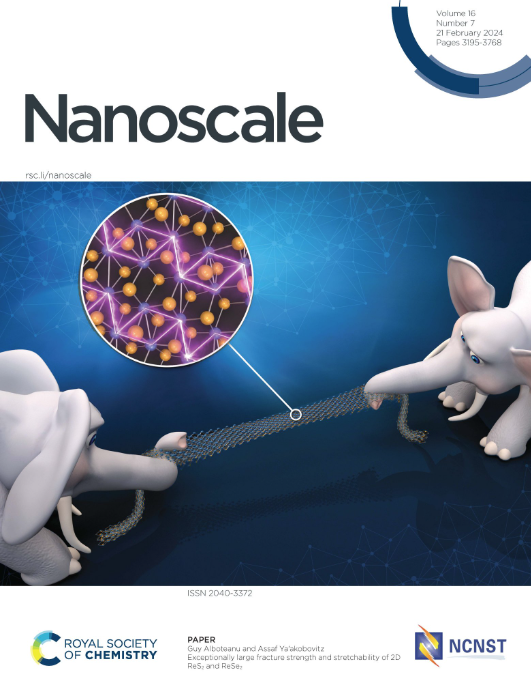Bi2Se3/PtSe2 heterostructure ultra-broadband UV-to-THz negative photoconductive photodetectors with wide-temperature-range operation
IF 5.8
3区 材料科学
Q1 CHEMISTRY, MULTIDISCIPLINARY
引用次数: 0
Abstract
Ultra-broadband photodetectors have important applications in biomedical imaging, environmental monitoring, optical communication, and space exploration, etc. The need for wide temperature range adaptation in extreme environments (e.g., infrared guidance, space exploration) is particularly urgent. However, existing technologies face the following bottlenecks: first, traditional semiconductor detectors are limited to a single spectral response, ultra-wideband detection requires multi-device integration, and in the terahertz band there is a physical limitation of the mismatch between the photon energy and the material bandgap. Second, carrier scattering at high temperatures leads to a sudden drop in mobility and degradation of the optical response. Finally, the development of devices based on the negative photoconductivity effect is still in the exploratory stage, which limits the engineering applications. In this study, we have innovatively integrated photothermoelectric effect (PTE), joule thermal effect (JHE) and photoinduced bolometric effect (PBE) multi-physics mechanisms by constructing Bi2Se3-PtSe2 heterojunction, which realizes broad-spectrum UV-Terahertz (405 nm-0.1 THz) detection and stable operation in a wide temperature region of 183-501 K. Under zero bias, the device exhibits a self-powered positive optical response in the 405-1550 nm band based on the photothermoelectric effect. When bias voltage is applied, the negative photoconductive response is triggered by the synergistic Joule heating and optical radiothermal effect, with peak responsivity (R) of 44.45-83.6 A/W, specific detection rate (D*) of up to 4.63×107 Jones, and noise equivalent power (NEP) as low as 1.37×10-13 W/Hz1/2. Temperature characterization tests show that R/D*/NEP is optimized to 78.19 A/W/5.75×107 Jones/1.09×10-13 W/Hz1/2 under 1550nm illumination and 183K. Even at 501K, the device maintains 11.24 A/W responsivity and 7.9×106 Jones detection sensitivity. The present work breaks through the limitations of the traditional negative photoconductivity effect in terms of detection bandwidth and temperature stability through a multi-mechanism synergistic strategy, providing a theoretical basis and technical path for the design of a new generation of broad-spectrum photodetectors.宽温度范围工作的Bi2Se3/PtSe2异质结构超宽带uv - thz负光导光电探测器
超宽带光电探测器在生物医学成像、环境监测、光通信、空间探测等领域有着重要的应用。在极端环境(如红外制导、空间探索)中对宽温度范围适应的需求尤为迫切。然而,现有技术面临以下瓶颈:首先,传统的半导体探测器仅限于单一光谱响应,超宽带探测需要多器件集成,在太赫兹波段存在光子能量与材料带隙不匹配的物理限制。其次,载流子在高温下的散射导致迁移率的突然下降和光学响应的退化。最后,基于负光导效应的器件的开发仍处于探索阶段,这限制了工程应用。在这项研究中,我们通过构建Bi2Se3-PtSe2异质结,创新地集成了光热电效应(PTE)、焦耳热效应(JHE)和光致热效应(PBE)多物理机制,实现了广谱紫外-太赫兹(405 nm-0.1 THz)探测,并在183-501 K的宽温度范围内稳定工作。在零偏置下,基于光热电效应,器件在405 ~ 1550nm波段表现出自供电的正光学响应。施加偏置电压时,由于焦耳加热和光辐射热效应的协同作用,引发负光导响应,峰值响应率(R)为44.45-83.6 A/W,比检测率(D*)可达4.63×107 Jones,噪声等效功率(NEP)低至1.37×10-13 W/Hz1/2。温度表征测试表明,在1550nm光照和183K下,R/D*/NEP优化为78.19 A/W/5.75×107 Jones/1.09×10-13 W/Hz1/2。即使在501K,该设备保持11.24 A/W的响应度和7.9×106琼斯检测灵敏度。本工作通过多机制协同策略突破了传统负光导效应在探测带宽和温度稳定性方面的局限,为新一代广谱光电探测器的设计提供了理论基础和技术路径。
本文章由计算机程序翻译,如有差异,请以英文原文为准。
求助全文
约1分钟内获得全文
求助全文
来源期刊

Nanoscale
CHEMISTRY, MULTIDISCIPLINARY-NANOSCIENCE & NANOTECHNOLOGY
CiteScore
12.10
自引率
3.00%
发文量
1628
审稿时长
1.6 months
期刊介绍:
Nanoscale is a high-impact international journal, publishing high-quality research across nanoscience and nanotechnology. Nanoscale publishes a full mix of research articles on experimental and theoretical work, including reviews, communications, and full papers.Highly interdisciplinary, this journal appeals to scientists, researchers and professionals interested in nanoscience and nanotechnology, quantum materials and quantum technology, including the areas of physics, chemistry, biology, medicine, materials, energy/environment, information technology, detection science, healthcare and drug discovery, and electronics.
 求助内容:
求助内容: 应助结果提醒方式:
应助结果提醒方式:


